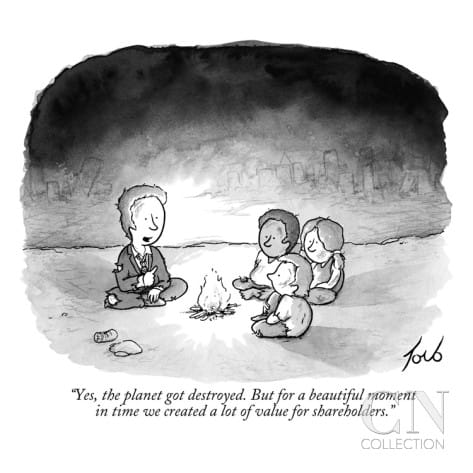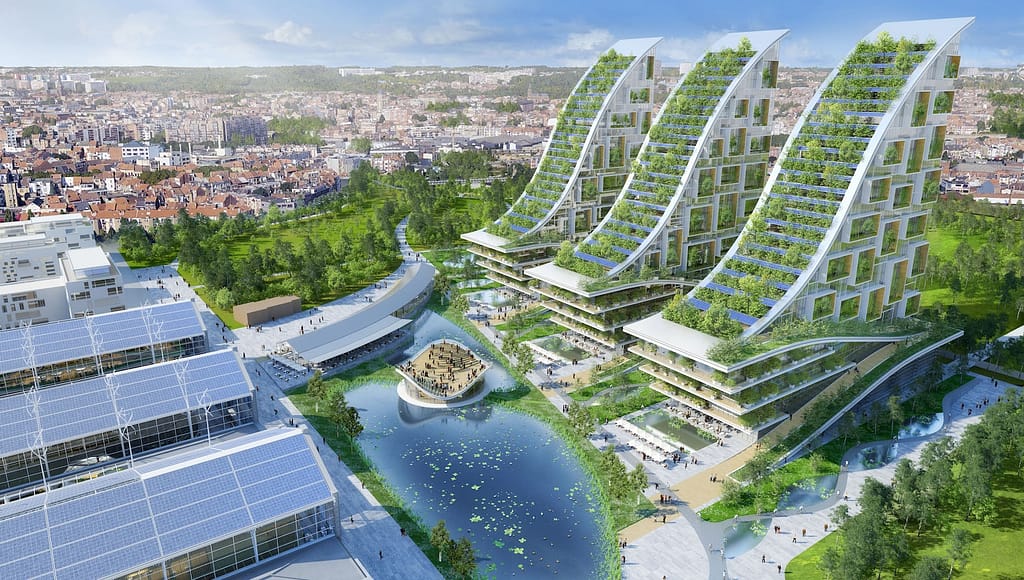What’s missing in this article is a crisp opening. Something about exploitation and education, politics and money. That’s how much I want to say about the prototype of Terra Nil, which I recently not only enjoyed but also made me questioning some principles. But for now I have to make a decision and focus on one aspect, one sound: the noise of green.
Terra Nil, or rather its prototype, is a building strategy game and begins where the wet dream of eternal growth will end: In the Wasteland. This game with lovingly pixelated iso optics is about the revival of a poisoned and unfertile piece of earth. With a few clicks I place wind turbines in the barren landscape, because first of all I need energy. What follows, however, are not roads or industrial parks, but riverbeds and soil detoxifiers. While I place greenhouses, pump water and turn parcel after parcel into fertile meadows, the game rewards me with its currency for every successful move: lush green leaves. It audibly rushes into my virtual wallet and gives me more room to maneuver for ever more effective measures, because it is the resource basis for further installations.
So far, it feels strangely familiar. I remember Transport Tycoon and Sim City 2000, which I played for nights on end as a kid. Again, it’s all about changing a staked out area to suit the game’s objective. The measures for this consist of deforestation, excavation, cement, steel and growth. Because game success is subject to a simple premise: Cash flow. Also a kind of green noise. Those who build and plan particularly efficiently, identify and exploit resources, are rewarded accordingly. Everything in the games eventually turns into money. Whoever performs a lot, gets a lot. Whoever let others perform a lot, gets even more. Overnight, the assets of my transport empire could easily double – without my intervention.
The starting landscapes of Sim City or Transport Tycoon are surprisingly natural, tree-green and river-blue. There’s hardly anything left of that at the end, when my world consists only of roads, rails, power plants, houses, landfills and airports. You can theoretically keep playing these games forever, but when no more parcel can be optimized, I have won and successfully ended the game.
I never questioned this at the time because it seemed to me to reflect the world as it just works. I’m a city kid, I know commercial and industrial areas and their necessity. I know that steel doesn’t grow on trees and that motorized mobility is a foundation of my prosperity. I only today understand the price of this prosperity and the standard-setting effect of these games.

In phase one, Terra Nil plays like a re-skin of the classic principles. Build, extract, collect currency, keep building. Every green noise a little dopamine kick. Phase two poses a new challenge: what has been created so far must change, because it is too monothematic. Biodiversity is needed! I farm bees, burn down buildings to use their ashes as soil for entire forests, and create wetlands. The simulation game becomes a colorful chaos and the rustle of green is joined by yellow and blue and red and purple.
Of course, this game is political. Just as Sim City or Age of Empires or even Pong are. It just can’t be done without it. If we understand politics as binding agreements on communal living, then every creation that emerges in it is good for commentary. Many commentaries can be reduced to a simple “that’s just the way it is”, because they declare a social status quo to be the foundation of their gameplay. City building requires highways (Sim City). Power is claimed and defended militantly (Age of Empires). The fun of the game lies in the competition, in which the best player always wins (Pong).
Of course, games deliberately borrow only parts of the real world; after all, the choice of a particular aspect is often the pivot of the core gameplay. The analogies also make it easier for us to understand the principles of the games without having to read a lot of manuals. But we have to ask ourselves why these abbreviated real-world analogies so overwhelmingly draw from the concept pool of economy, profit, military, destruction, dominance and power – even if they take place in fantasy or future worlds. It’s a not entirely unproblematic cycle: our assumptions about how the world works shape our games – and they manifest our assumptions about our world. To the degree that we consider profit-driven thinking as natural as natural laws.
Recently, I read something about solarpunk. This kind of vision of the future doesn’t think in terms of inevitable dystopia, as cyber- or steampunk often do, but asks what if we manage to combine environmental sustainability and civilizational progress? If we escape the child-eating spiral of capitalism? The image of green-overgrown but ultra-modern skyscrapers stuck in my mind. Living in harmony with everything this world has to offer. Then when I look at my little pixelated buildings in Terra Nil amidst this greenery and see the resemblance, I feel a little more confident that we have a chance at utopia after all. Games can do more than describe what is, they are able to formulate norms and values. Anyone who imagines the salvation of the world in this is a dreamer. But this bubble, as small as it is and its definitional effect, needs more courageous fantasies, not more of the same.

I still enjoy the greening of my terrain and the accompanying noise. Now less that of my green currency and more that of the wind in the tops of the towering trees. The last part of the story, however, turns out differently than I would have thought: In phase 3, the game requires me to pack my things and leave the revitalized patch of earth to its own devices. In the meantime I see not only flora, but also animals have settled again and take advantage of what nature provides. However, my hyper-industrial buildings from the previous phases are still standing around. The eco-cycle, however, now functions self-sufficiently, what else are they here for but to haunt? So I build recyclers and transport routes, first with cable cars and ships, then with drones, until even the last scrap metal has been transported to a missile silo (yes, even my transport routes are deconstructed). With all that scrap, my disposal rocket takes off into space. Even the silo left behind is flooded a few seconds later and turned into a lake. Almost nothing reminds of my previous presence, I have cleaned up after myself. In my footprint nothing but life.
For a while longer, I contemplate my successful terraforming. The noise of my green money has become indifferent to me, I am happy to hear and see everything buzzing, splashing, flying and living. They are only pixels on my plastic screen but they embody a dream. This romantic, worn-out dream of a better world.
The prototype of Terra Nil – “A reverse city builder about ecosystem reconstruction” – was created by South Africa’s Free Lives in an itch.io game jam and has been available for Mac and PC since 2019. The three-person team, which already enjoyed success with Broforce at the time, has been reworking the game into a full-fledged commercial game for Steam, published by Devolver Digital, since late 2020. There is no release date yet, but a demo is already available.
This post is also available in:
![]() German
German

